 Last month, the RAIN Alliance held its latest RAIN in Action event in Florence, bringing the industry together for a packed, three-day schedule, filled with discovery, connection, and insights.
Last month, the RAIN Alliance held its latest RAIN in Action event in Florence, bringing the industry together for a packed, three-day schedule, filled with discovery, connection, and insights.
More than 250 attendees joined us to hear about the latest RAIN technology trends, use cases, and advancements, and learn how continued innovation is resulting in increased RAIN adoption, market growth, and evolution. RAIN Alliance face-to-face Work Groups took place concurrently, giving members the chance to come together and align on their various initiatives.
We hosted 46 industry speakers from a myriad of sectors including retail, automotive, rail, luxury, and food safety, covering a range of topics and use cases for RAIN technology. One of the key overarching themes during the event was RAIN’s role in driving sustainability, underscored by a full-day Digital Product Passport (DPP) workshop entitled ‘A data carrier of preference: RAIN’s key role in implementing DPP.’ Day two was the RAIN Growth Summit, sharing insights into growth market trends and applications across various industries, and day three hosted members to share Alliance updates, technical perspectives, and Work Group progress.
For those who were not lucky enough to be in attendance in Florence, here are three key takeaways from the RAIN in Action event:
1. RAIN has a pivotal role to play in enabling the DPP
As put by one of our expert speakers, Femke Zijlstra, Sustainability Digital Solutions at Avery Dennison Smartrac, “traceability is queen.” Across almost every industry, organizations are looking to improve their sustainability practices, with the European Union’s impending DPP regulation set to mandate easy access to data on the traceability and composition of every product, enabling a true circular economy.
For consumers and other businesses to access products’ vital DPP information, they will need to engage with a data carrier. These carriers will link physical products to their digital DPP information, with the company that puts the product on the market responsible for ensuring this data is available throughout an item’s lifecycle. RAIN technology can be used as a data carrier to provide access to this information, which can be used to improve traceability, improve sorting and recycling, inform decisions about refurbishment, reuse and renting, and how to sustainably manage the product’s ‘end-of-life’. As put by Hervé d’Halluin, Leader RFID & Traceability at Decathlon, “RAIN is more than a data carrier for efficiency. From a circularity point-of-view, it’s a perfect match for the DPP.”
For more information on RAIN’s differentiating advantages for enabling the DPP, you can read the RAIN Alliance position on the EU Digital Product Passport and download our series of FAQs.
2. Applications and use cases continue to proliferate
The RAIN Growth Summit had speakers from a wide variety of industries, discussing the benefits of using RAIN in their sector. From luxury brands such as Bulgari, YSL, and Alkenium, to medical use cases from Intelliguard, retailers like H&M and Decathlon, to automotive, tyres, and rail use cases with Bridgestone, Ferrari, Volvo, Michelin, and Swiss Federal Railways – the list goes on!
Panelists discussed how RAIN has historically been used for inventory management in retail, but is now being explored to make stores more efficient and enhance customer experience, for example, by enabling in-store staff to carry out real-time item location searches.
Equally, the theme of the DPP carried through to the RAIN Growth Summit. Sustainability use cases in the tyres industry were particularly highlighted, discussing how a RAIN tag can be embedded into the wall of a tyre and scanned to gain insight into materials used, improve traceability of used tyres and help manage end of life, retreading, and recycling.
This explosion of RAIN adoption and usage in new industries and use cases reflects insights from our bi-annual research report produced by VDC Research earlier this year. The report highlighted the diversification of RAIN applications, with the technology increasingly being used to drive efficiencies across new areas of business operations, resulting in a projection of 115bn units of RAIN tag chip shipments by 2028.
3. RAIN is on the cusp of being a B2C technology
Just before RAIN in Action, Qualcomm released a statement that said “The integration of RAIN technology into mobile devices is rapidly progressing, with the initial rollouts focusing on enterprise mobile devices, expected within a few quarters. Consumer devices equipped with RFID technology are set to follow.”
This was discussed during the event, highlighting the opportunities it will bring for companies to deliver new services their customers want, track product popularity to improve inventory and reduce waste, and enable more sustainable customer behaviors. As put by Ricardo Lobo, CEO at Beontag, “RAIN enables customer interaction as a completely new field of services and innovation.” However, with new opportunities come new challenges for the industry to overcome to ensure the best possible user experience. Ultimately, the RAIN ecosystem must prioritize privacy and security to ensure consumer confidence in using the technology when it is readily available on their devices.
Until next time
Thank you to everyone who came along to RAIN in Action, especially our sponsors and guest speakers. We enjoyed sharing the experience with you all, with our Italian garden party a particular highlight. We hope that you’ll be able to join us for our next Member Meeting, in partnership with RFID Journal Live, taking place in Las Vegas in May 2025. Check for more details coming soon!
